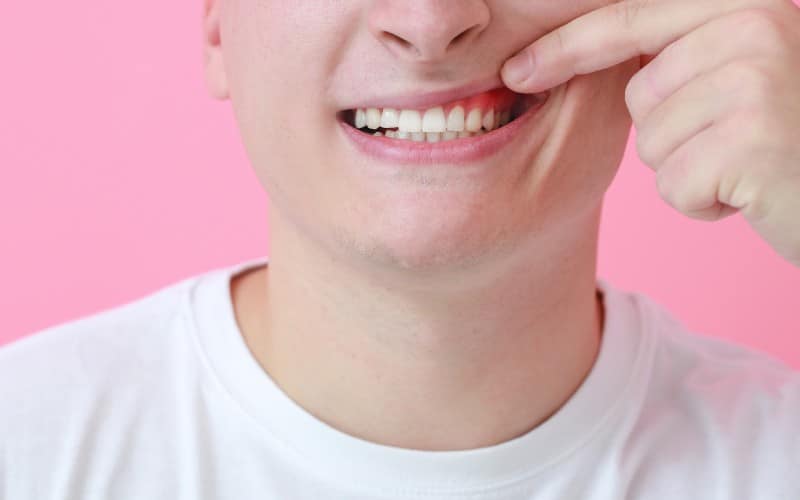Gum recession is a common yet often underestimated dental issue that affects a large portion of the population. It occurs when the gum tissue around the teeth wears away or pulls back, exposing the roots of the teeth. This condition can lead to significant oral health problems if left untreated, including increased tooth sensitivity, higher risk of cavities, and a decline in overall periodontal health. In this blog, we’ll explore the causes and consequences of gum recession and discuss modern treatment options, including soft tissue grafting, that can help rejuvenate your smile and restore your gum health.
What is Gum Recession?
Gum recession happens gradually when the gum tissue surrounding the teeth begins to recede, exposing the tooth roots. This condition not only affects the aesthetic appearance of your smile but can also cause several dental health issues. When the gums pull back, it leaves the tooth root exposed and vulnerable, potentially leading to decay or sensitivity.
Common Causes of Gum Recession
- Poor Oral Hygiene: Inadequate brushing and flossing can lead to plaque buildup, which irritates the gums and causes them to recede.
- Periodontal Disease: Chronic gum infections, such as gingivitis or periodontitis, can cause severe gum recession if left untreated.
- Genetics: Some individuals are genetically predisposed to thinner gums or gum recession.
- Aggressive Brushing: Brushing too hard or using a hard-bristled toothbrush can cause the gums to wear away.
- Tobacco Use: Smoking or chewing tobacco increases the risk of gum disease and recession.
- Hormonal Changes: Fluctuations in hormones during pregnancy, menopause, or puberty can make gums more vulnerable to recession.
- Teeth Grinding (Bruxism): Excessive force on the gums due to grinding can also contribute to gum recession.
The Impact of Gum Recession on Oral Health
Gum recession can lead to several negative consequences for your oral health:
- Increased Tooth Sensitivity
When the tooth roots are exposed, they can become sensitive to hot, cold, or sweet foods and beverages. This heightened sensitivity can cause discomfort and affect your ability to enjoy certain foods. - Higher Risk of Tooth Decay
The exposed root surfaces are more susceptible to decay, as they lack the protective enamel that covers the rest of the tooth. If left untreated, this can lead to cavities and other serious dental issues. - Aesthetic Concerns
Gum recession can alter the appearance of your smile, making teeth appear longer and potentially causing the gums to look uneven. This aesthetic concern can affect your confidence and self-esteem. - Periodontal Disease
As gum recession progresses, it can increase the risk of developing periodontal disease. When gums recede, they create pockets where bacteria can accumulate, leading to infections and further damage to the gum tissue and supporting bone. - Tooth Loss
In severe cases, if gum recession is not treated, it can lead to tooth mobility and even tooth loss due to the weakening of the underlying bone structure.
Modern Solutions for Gum Recession
While gum recession can be concerning, modern dental treatments offer effective ways to rejuvenate the gums and restore oral health. One of the most common and effective procedures for gum rejuvenation is soft tissue grafting, a surgical technique designed to restore lost gum tissue. Let’s explore some of the most popular treatment options for gum recession.
1. Soft Tissue Grafting
Soft tissue grafting is a surgical procedure where tissue is taken from another area of the mouth (such as the palate) or from a donor source and grafted onto the area of gum recession. This procedure helps to cover exposed tooth roots, reduce sensitivity, and restore a more natural gum line.
Benefits of Soft Tissue Grafting:
- Reverses Gum Recession: By covering the exposed roots with new tissue, the procedure helps reverse the effects of gum recession.
- Improves Aesthetics: Soft tissue grafting restores the gum line and can enhance the appearance of your smile.
- Prevents Further Recession: Grafting can prevent further gum loss and protect the teeth from additional damage.
- Reduces Tooth Sensitivity: By covering the exposed roots, it alleviates sensitivity caused by gum recession.
There are different types of soft tissue grafts, including connective tissue grafts, free gingival grafts, and pedicle grafts, each offering unique benefits depending on the severity of the gum recession.
2. Pinhole Surgical Technique (PST)
The Pinhole Surgical Technique (PST) is a minimally invasive procedure for gum recession that doesn’t require cutting or stitching. Instead, a small hole is made in the gum tissue, and special instruments are used to reposition the gums to cover the exposed tooth roots.
Benefits of PST:
- Minimally Invasive: No need for incisions or stitches, reducing the risk of complications.
- Faster Recovery: Because it’s minimally invasive, recovery time is quicker compared to traditional grafting methods.
- Less Discomfort: Patients experience less discomfort post-treatment and can return to regular activities faster.
3. Scaling and Root Planing
If gum recession is caused by periodontal disease, your dentist may recommend a deep cleaning procedure known as scaling and root planing. This treatment involves removing plaque and tartar buildup from below the gum line and smoothing the exposed root surfaces to encourage the gums to reattach to the teeth.
Benefits of Scaling and Root Planing:
- Reduces Infection: Removes bacteria and plaque, preventing further gum damage.
- Promotes Gum Healing: Helps the gums reattach to the teeth and prevents further recession.
4. Laser Gum Treatment
Laser therapy is another advanced treatment for gum recession. Lasers are used to remove damaged tissue and promote healing, while also improving the contour of the gums. This method is less invasive and results in faster recovery times compared to traditional surgical procedures.
Benefits of Laser Gum Treatment:
- Minimally Invasive: No incisions or stitches required.
- Precise and Quick: Laser treatments are highly precise and often require less recovery time.
- Less Pain: Most patients report less discomfort compared to traditional treatments.
Preventing Gum Recession
While treatments like soft tissue grafting can help reverse gum recession, prevention is key to maintaining healthy gums. Here are some tips to protect your gums:
- Brush Gently: Use a soft-bristled toothbrush and brush in gentle circular motions to avoid damaging your gums.
- Floss Regularly: Flossing helps remove plaque from between your teeth and along the gum line, preventing gum disease.
- Avoid Tobacco: Smoking and chewing tobacco can increase the risk of gum disease and recession.
- Visit Your Dentist Regularly: Routine check-ups allow your dentist to detect early signs of gum recession and address them promptly.
Gum recession can have a significant impact on your oral health, but with modern treatments such as soft tissue grafting and laser therapy, rejuvenating your gums and restoring your smile is possible. Early intervention is key to preventing further damage, so if you notice signs of gum recession, it’s important to seek professional help. With the right treatment and preventative care, you can maintain healthy gums and protect your smile for years to come.





